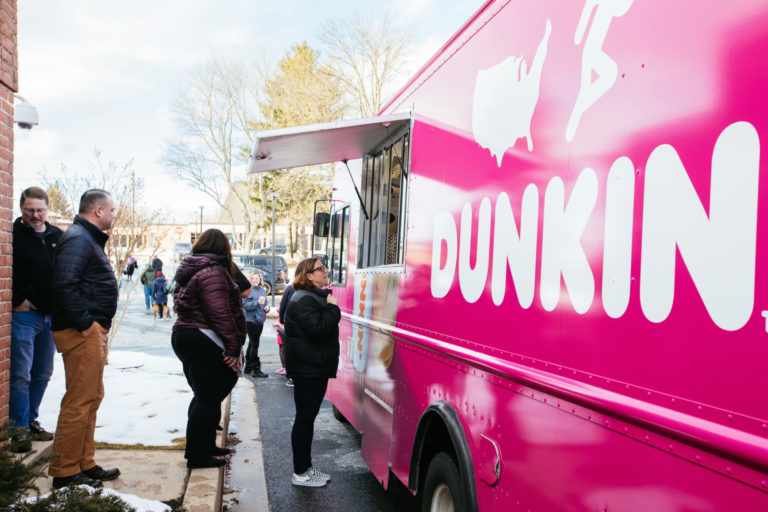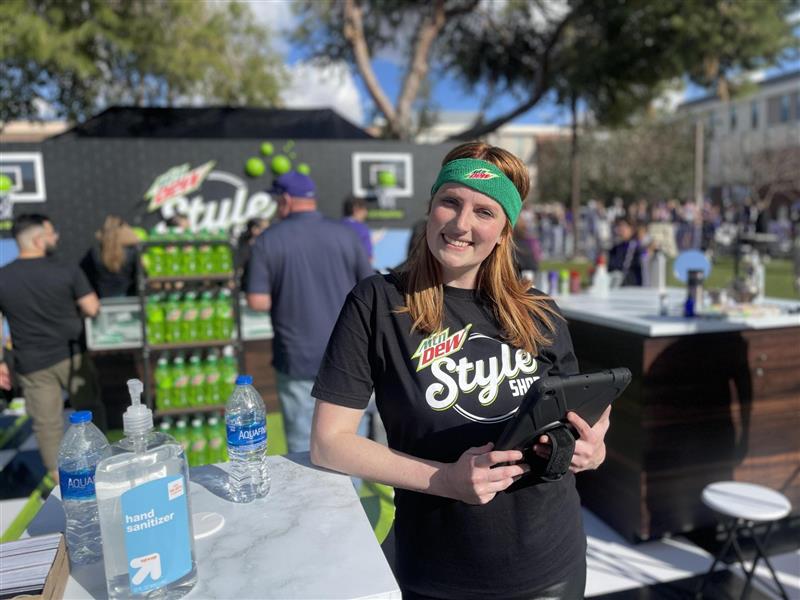06.15.22
By Lisa Major

Brand marketers know that experiential marketing is insanely effective. It’s engaging, unique, memorable, and fun. All of those things create a wow factor for consumers, leaving a lasting impression on them. While experiential marketing is often used to build brand awareness, it can also help brands during a rebrand. In this edition of Happy Hour, we lead off with an article that explains how experiential can bolster brand identity during a rebrand. Next up, we discuss why more and more brands are investing in experiential marketing this year, and lastly, we deliver tips on how to measure event marketing ROI.
“A more immersive and all-encompassing marketing approach can help a rebrand feel less abrupt to passionate followers.” ~Adrian Si, Spin Sucks

Photo: Dunkin’
Brands and marketers know that a strong brand identity is essential to building and maintaining customer relationships. But what happens when there is a need to rebrand? What happens to the customers that know and love the brand the way it is? Throwing up a billboard or print ad with a new logo isn’t going to cut it. Instead, companies should reintroduce their brand with a highly personalized, immersive, and authentic approach using experiential marketing. Experiential allows brands to have more control over the rebrand through targeted messaging and face-to-face interactions. When consumers can have two-way conversations with brands, they feel heard and included, resulting in an authentic experience that humanizes the brand. All of this helps to reestablish your brand identity as you go through a rebrand. See how experiential can help bridge a crucial gap during the rebranding process.
“83% of marketers also plan to continue investing the same amount or increasing their experiential marketing investments in 2022.” ~Flori Needle, HubSpot

Based on recent findings, many brands are buying into experiential marketing in 2022, and for good reasons. During the pandemic, digital fatigue set in in a big way. The lack of connectivity and community hit hard, and as things return to normal, people are more than ready to make up for lost time. Brands are taking advantage of this need by prioritizing experiences that foster in-person interactions and grow relationships. This article discusses why more brands are investing in experiential marketing this year (and why you should consider adding it to your marketing mix).
“Measuring event success is a comprehensive endeavor that starts well before the event, continues during the event, and concludes after the event data is analyzed or applied to the overall event strategy.” ~Anja Grcar, Endless Events

Experiential marketing allows brands to connect with consumers in meaningful ways. They often include immersive and engaging elements that wow consumers. And while these types of experiences are one of the most effective marketing strategies around, success is not automatic. To achieve success, marketers need to understand how to measure event ROI by prioritizing goals and KPIs when creating a campaign strategy. Here, Endless Events outlines how to identify your goals and the tools you can use to help measure ROI.
If you’re looking for an event staffing partner for your next experiential or event marketing campaign, we would love to chat!